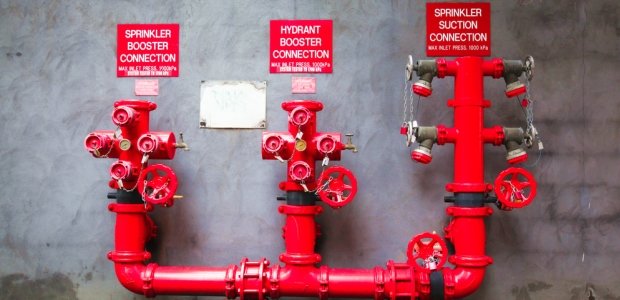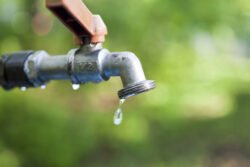Fire Water Protection.

Fire Water Protection: Safeguarding Lives and Properties
Introduction
The term “Fire Water Protection” refers to the methods, systems, and measures used to prevent or control fires through the application of water. Water remains one of the most effective and readily accessible resources for firefighting worldwide due to its cooling properties and ability to smother fires. In a world where urbanization and industrial growth have accelerated, safeguarding human lives and properties from fire hazards is more crucial than ever. This article delves into the intricacies of Fire Water Protection, exploring its significance, components, and advancements in technology, as well as challenges and future directions.
The Importance of Fire Water Protection
Historical Perspective
Since ancient times, civilizations have recognized the devastating impacts of uncontrolled fires. From the Great Fire of Rome in AD 64 to the more recent Grenfell Tower fire in 2017, catastrophic fires have highlighted the vulnerabilities of human settlements and infrastructure. Historically, communities have depended on rudimentary water supply systems, such as bucket brigades, to fight fires. However, as our societies became more complex, so did the methods to combat fire hazards.
Modern-day Relevance
In today’s context, fire risks have significantly increased due to denser urban populations and the proliferation of flammable materials and chemicals in residential, commercial, and industrial spaces. Fire Water Protection is essential not only for the obvious safety implications but also for economic reasons. Uncontrolled fires can lead to substantial property damage, massive insurance claims, and business interruptions.
Components of Fire Water Protection
Water Supply Systems
A dependable water supply is foundational to any fire protection strategy. This includes municipal water systems, dedicated reservoirs, and even natural sources like rivers and lakes. Fire water supply systems are specifically designed to meet peak demand scenarios and must be resilient against potential disruptions.
-
- Municipal Systems: These provide the primary source of water for fire departments, with hydrants positioned strategically throughout urban areas. They require frequent maintenance and testing to ensure adequate water pressure and flow rates during emergencies.
-
- On-site Storage: Facilities, especially in industrial or remote areas, may maintain their own water storage systems, such as tanks or ponds, to ensure immediate fire-fighting resources.
-
- Pumping Stations: These are crucial for maintaining water pressure, particularly in high-rise buildings or large industrial sites. They must be reliable under both normal operation and emergency circumstances.
Fire Sprinkler Systems
Sprinklers are among the most effective tools for compartmentalizing and extinguishing fires before they can spread. Their design and implementation vary based on the building type, occupancy, and specific risk factors.
-
- Wet Pipe Systems: These are the most common type, where water is stored under pressure in the system’s pipes and released when a heat-sensitive element in a sprinkler head is activated.
-
- Dry Pipe Systems: Primarily used in environments susceptible to freezing, these systems hold pressurized air or nitrogen instead of water. Water is only released when the sprinkler head activates.
-
- Deluge Systems: Often used in high-hazard areas like chemical storage facilities, these systems release water through all open sprinklers simultaneously when activated.
-
- Preaction Systems: These require a two-step activation process, usually combining a fire detection system with a sprinkler release, providing an extra layer of protection against accidental discharge.
Fire Hydrants
Fire hydrants are critical conduits that allow firefighters to quickly access a water supply. These must be strategically placed and well-maintained, with clear markings indicating their operational status and connection points.
Advanced Water-Based Technologies
Recent advancements have introduced sophisticated technologies that enhance the efficiency and effectiveness of traditional water-based fire protection measures.
-
- Water Mist Systems: Utilizing fine water droplets, these systems maximize the cooling and oxygen displacing capabilities of water, proving particularly effective in areas where water damage is a concern.
-
- Foam-based Systems: Especially useful in situations involving flammable liquid fires, these systems mix foam concentrates with water to suppress vapors and secure the fuel surface.
-
- Smart Systems and IoT: The integration of sensors, automation, and real-time data analytics enable preemptive action and remote monitoring of fire protection systems.
Fire Water Protection in Various Settings
Residential Buildings
In residential settings, fire sprinkler systems are becoming more commonplace, often mandated by building codes. The emphasis here is on simplicity and reliability to safeguard families and minimize water damage during activation.
Commercial Complexes
Office buildings, malls, and hotels present unique challenges due to high occupancy and varied risk levels. Fire protection systems are typically integrated with other safety measures, such as alarm systems and emergency lighting, to facilitate safe evacuations.
Industrial Facilities
Given the presence of volatile materials and complex operations, industrial facilities require robust Fire Water Protection. Customized solutions, incorporating foam and deluge systems, are common to address specific fire risks.
Remote and Rural Areas
Providing fire protection in rural locales often necessitates community-based solutions like volunteer fire brigades and shared water resources. Innovative methods like employing cisterns and utilizing natural water bodies are also employed.
Challenges in Fire Water Protection
Infrastructure and Maintenance
Aging infrastructure and inadequate maintenance are significant obstacles. Municipal systems must regularly assess and update their networks to meet modern demands, balancing the need for investment with budget constraints.
Water Scarcity and Environmental Concerns
In regions where water is scarce, using it for firefighting competes with essential needs. This dilemma necessitates better conservation methods and the development of technologies that maximize efficiency.
Compliance and Regulation
Navigating the complex landscape of local, national, and international fire safety regulations can be challenging. Building owners and managers must ensure compliance while also addressing specific site vulnerabilities.
Technological Adaptation
Despite advancements, the integration of new technologies into existing systems can be slow and costly. Overcoming resistance to change and ensuring seamless interoperability remains a focus for the future.
Future Directions
Advanced Materials and Engineering
Research into advanced materials that offer better resistance to fire or that can act as fire retardants is ongoing. Engineers and scientists are exploring innovative designs that inherently incorporate fire resistance into structures, reducing the reliance on external systems.
Integration with Sustainable Practices
As sustainability becomes a global priority, Fire Water Protection must align with green building initiatives. This includes systems designed to recycle water, use alternative benign fire suppressants, and reduce overall environmental impact.
Enhanced Collaboration and Training
Collaboration between governments, industry stakeholders, and communities is vital to forward-thinking fire protection strategies. Training programs can be expanded to not only include firefighting professionals but also building managers and residents to foster a more fire-aware society.
Use of Artificial Intelligence and Machine Learning
AI and machine learning have the potential to revolutionize fire protection by improving the predictiveness and responsiveness of fire detection and suppression systems. These technologies can analyze patterns, optimize resource allocation, and provide decision support in high-pressure situations.
Conclusion
Fire Water Protection is a foundational pillar of modern fire safety strategies, crucial for safeguarding lives and properties from the ever-present threat of fire. As cities expand and industrial activities proliferate, the need for effective, efficient, and sustainable fire protection systems becomes more pressing. By embracing advanced technologies, improving infrastructure resilience, and fostering collaborative frameworks, we can enhance our capabilities to protect our communities. As we look to the future, an integrated approach that combines innovative solutions, diligent maintenance, and comprehensive education will be key in mitigating fire risks and building a safer world.

